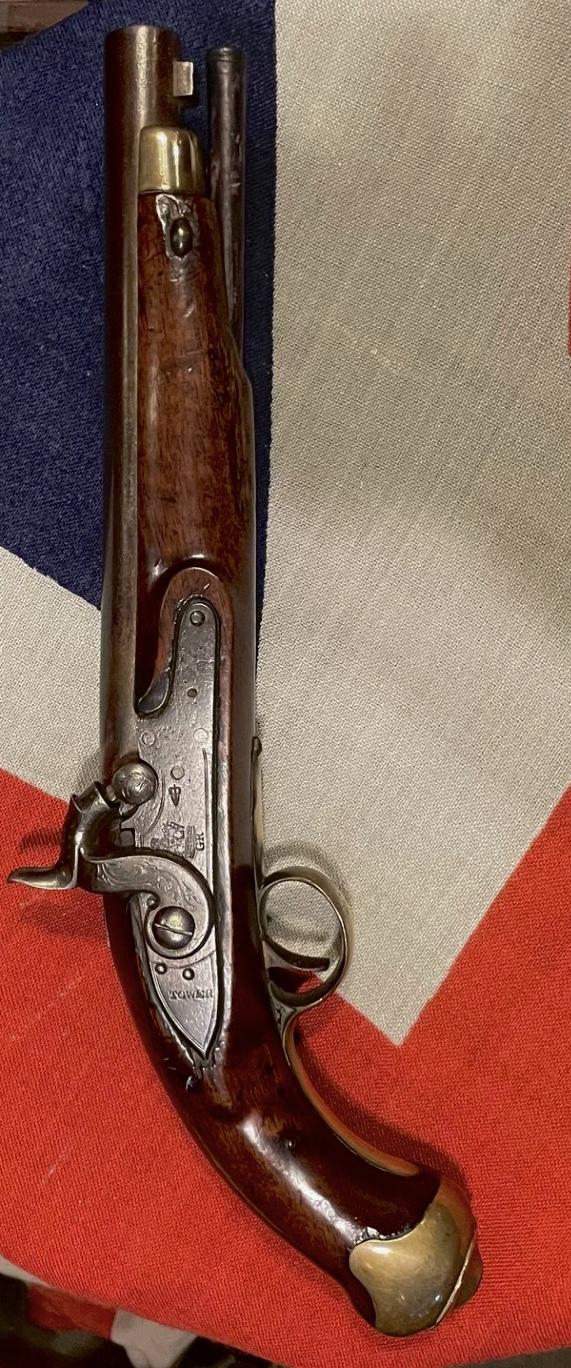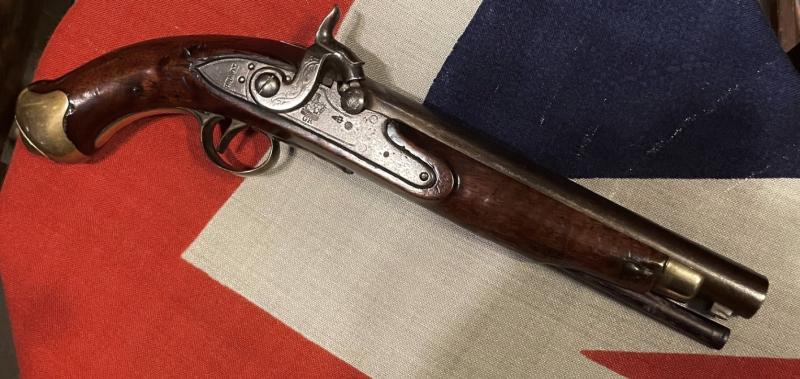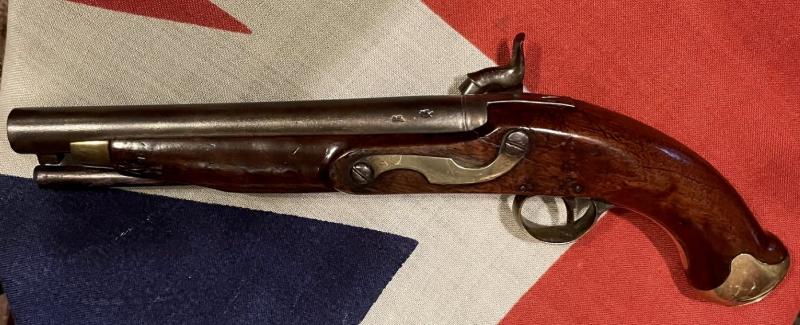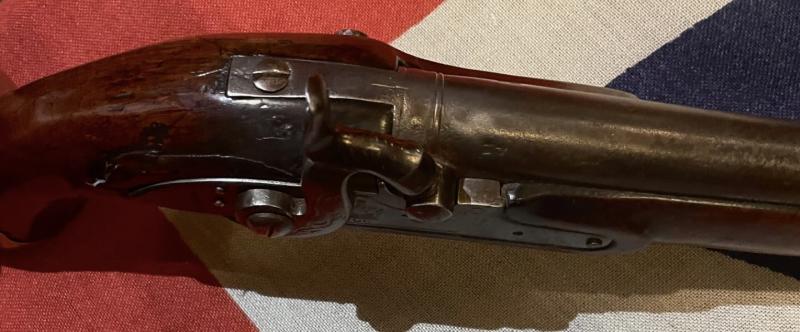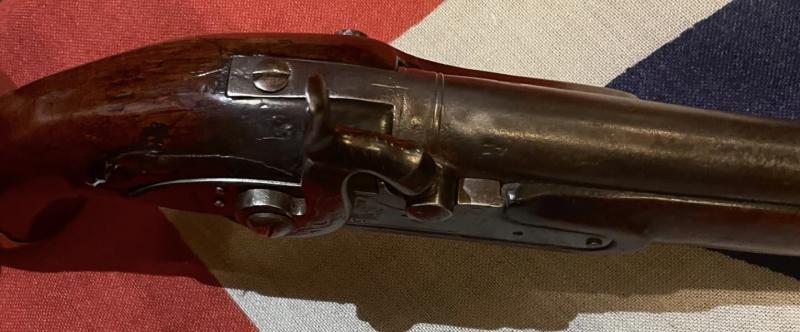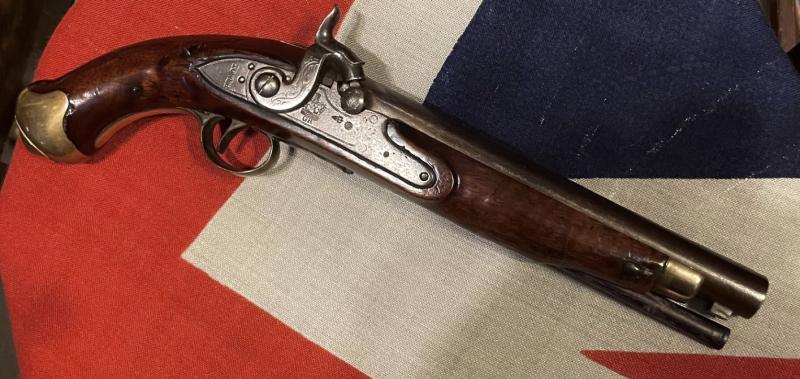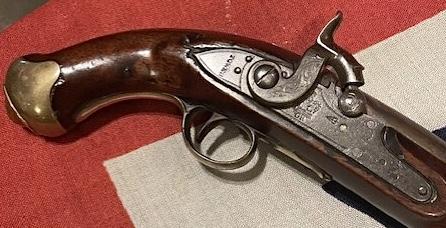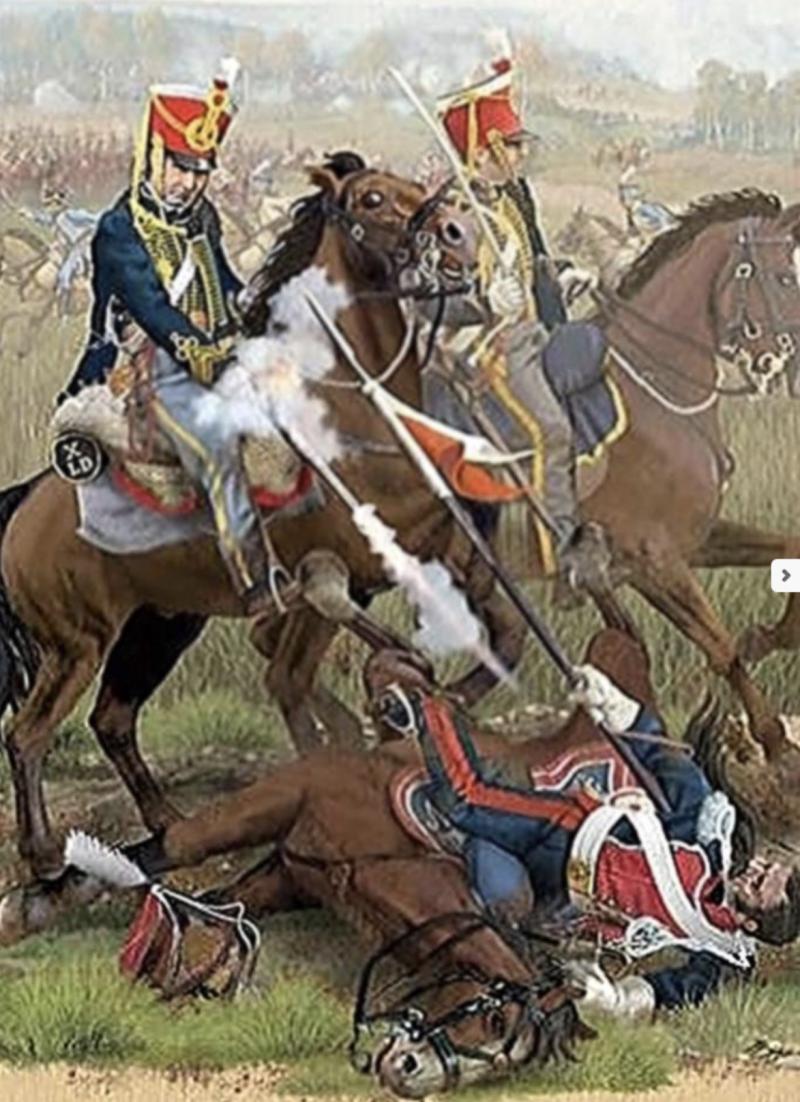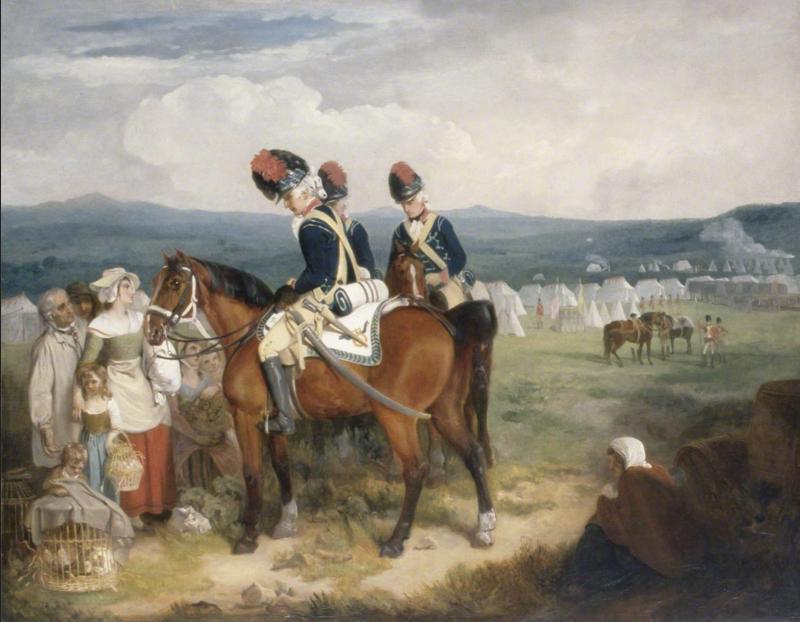A Fabulous, Circa 1804, Peninsular War & Waterloo British Light Dragoon Pistol From the Tower of London. GR Crown Tower Stamped Ordnance Issue, Superb Walnut Stock. Just Arrived Today & An Incredibly Inexpensive Light Dragoon Service Pistol
Traditional New Land pattern service issue brass mounts, trigger guard, side plate and skull crusher butt cap. Stunning piece with superb steel and amazing patination to the finest walnut stock. Converted and adapted in the 1830’s to the all new and improved percussion action system. A New Land pattern flintlock that was adapted and upgraded, for decades of future service, after around 20 years of prior service in the British Army front rank cavalry during the Napoleonic Wars, with a replacement self contained ram rod, and the new waterproof percussion action conversion.
There is an incredible saving of around £1000 to be made on this wonderful piece of original Tower of London issue British dragoon history.
This pistol was manufactured at the Tower armoury circa 1804, and its lock was inspected and stamped by Richard Duce, who was the official lock inspector from 1797 to 1818. His official ordnance stamp was the Crown over a broad arrow, alongside the regulation Crown GR mark and Tower. There are further ordnance stamps, such as a regulation GR stamped upon the finest walnut stock and its barrel tang. The barrel also has regulation proof stamps.
Introduced in the 1796 and in production by 1802, the New Land Cavalry Pistol provided one model of pistol for all of Britain's light cavalry and horse artillery.
The service of British Cavalry regiments, particularly the Light Dragoons, proved essential in the mastery of the Indian Subcontinent. The Duke of Wellington, then Arthur Wellesley, was primarily recognized for his military genius by his battles in India.
This fine pistol would have seen service in such as the 10th Light Dragoons aka 10th Hussars.
In 1806, the regiment was again re-designated, this time becoming a hussar regiment as the 10th (Prince of Wales's Own) Regiment of (Light) Dragoons (Hussars), and sailed for Corunna in Spain in November 1808. The regiment saw action at the Battle of Sahagún in December 1808 and the Battle of Benavente later in December 1808 during the Peninsular War. At Benavente the regiment captured General Charles Lefebvre-Desnouettes, the French cavalry commander.The regiment then took part in the Battle of Corunna in January 1809 before returning to England.
In 1813, having landed once more in Spain, the regiment fought at the Battle of Morales in June 1813.15 During the battle the regiment destroyed the 16th French Dragoons between Toro and Zamora, taking around 260 prisoners. The regiment also fought at the Battle of Vitoria later in the month while still in Spain and then, having advanced into France, fought at the Battle of Orthez in February 1814 and the Battle of Toulouse in April 1814. As part of the 6th Cavalry Brigade, the regiment charged the French cavalry and infantry at the Battle of Waterloo in June 1815
Cavalry was the 'shock' arm, with lances, pistols and sabres the principal hand weapons. The division between 'heavy' and light was very marked during Wellington's time: 'heavy' cavalry were huge men on big horses, 'light' cavalry were more agile troopers on smaller mounts who could harass as well as shock.
During the Napoleonic Wars, French cavalry was unexcelled. Later as casualties and the passage of years took their toll, Napoleon found it difficult to maintain the same high standards of cavalry performance. At the same time, the British and their allies steadily improved on their cavalry, mainly by devoting more attention to its organization and training as well as by copying many of the French tactics, organisation and methods. During the Peninsular War, Wellington paid little heed to the employment of cavalry in operations, using it mainly for covering retreats and chasing routed French forces. But by the time of Waterloo it was the English cavalry that smashed the final attack of Napoleon's Old Guard.
Small field service repair on the forward underside of the stock by the ramrod channel, with late replacement non swivel rammer, a nice strong main spring, and the action holds on one cocking action, likely due to slight age wear on the sear..
See picture 10 in the gallery; Another Reason To Visit Brighton-by-the-Sea This Summer. To Visit the Magnificent Pavilion Palace & View ‘The Encampment At Brighton’, a painting of British Light Dragoons on the hills at Brighton, by Francis Wheatley, RA, 1747-1801. Which We Were Most Proud To Assist & Enable Our Donation of the Painting to Brighton Museum 50 Years Ago
Every single item from The Lanes Armoury is accompanied by our unique Certificate of Authenticity. Part of our continued dedication to maintain the standards forged by us over the past 100 years of our family’s trading, as Britain’s oldest established, and favourite, armoury and gallery
Code: 25428
1195.00 GBP

